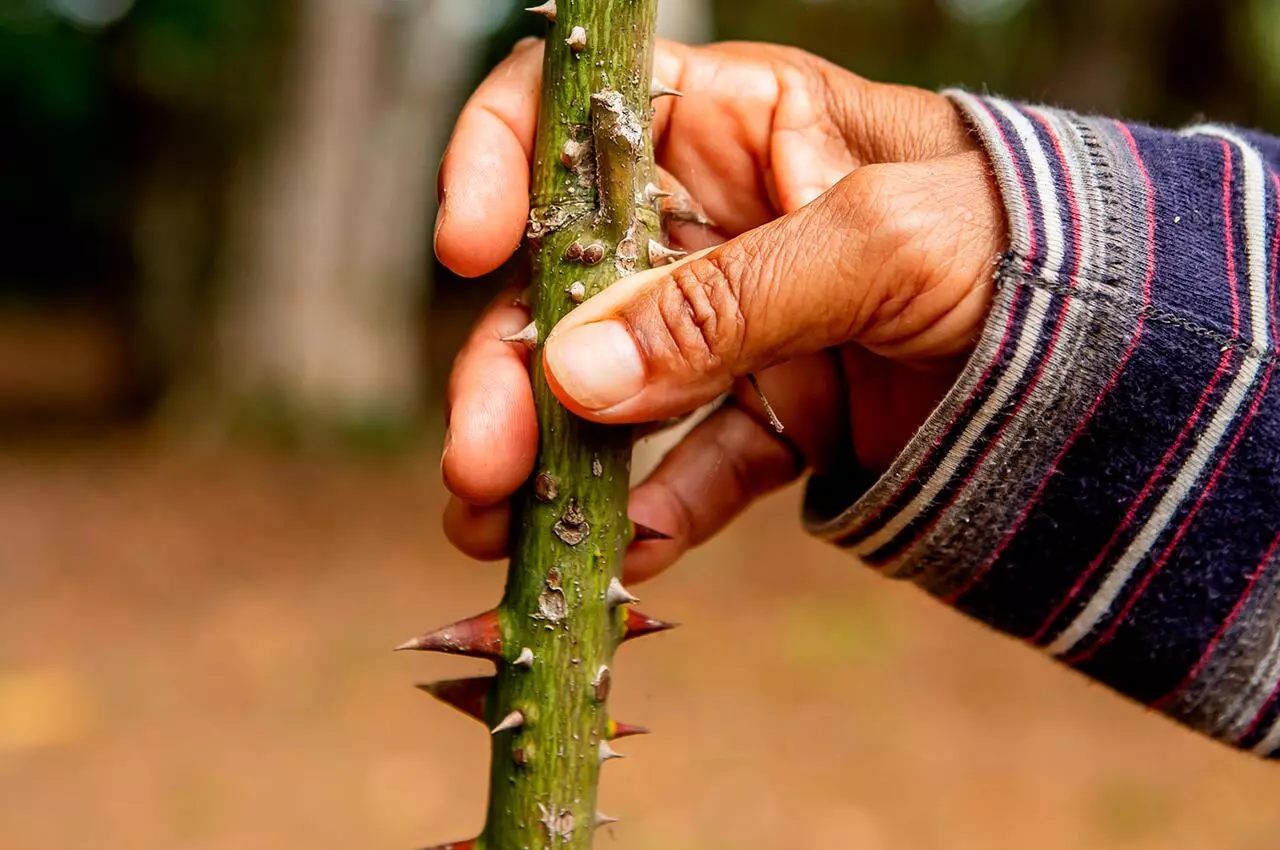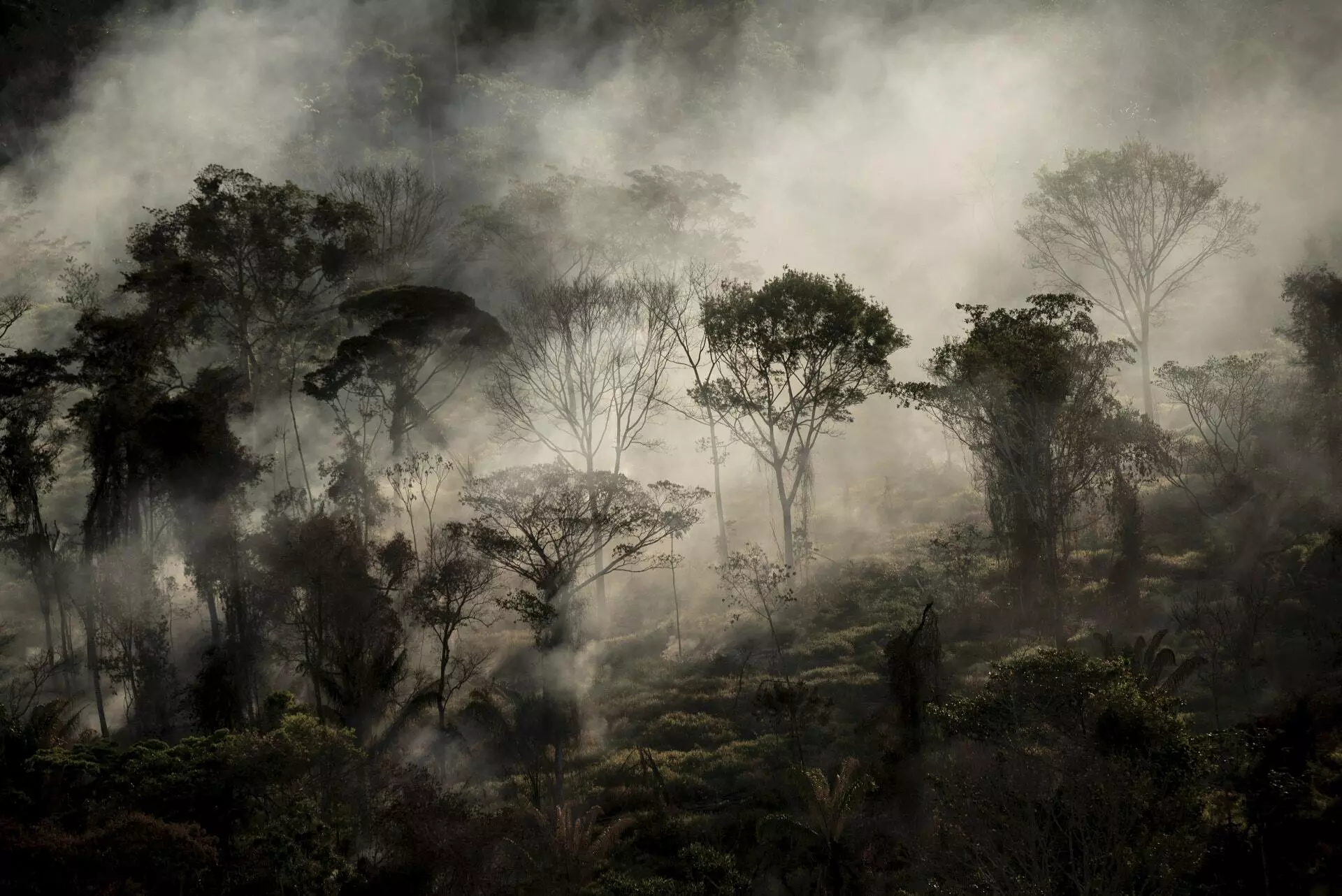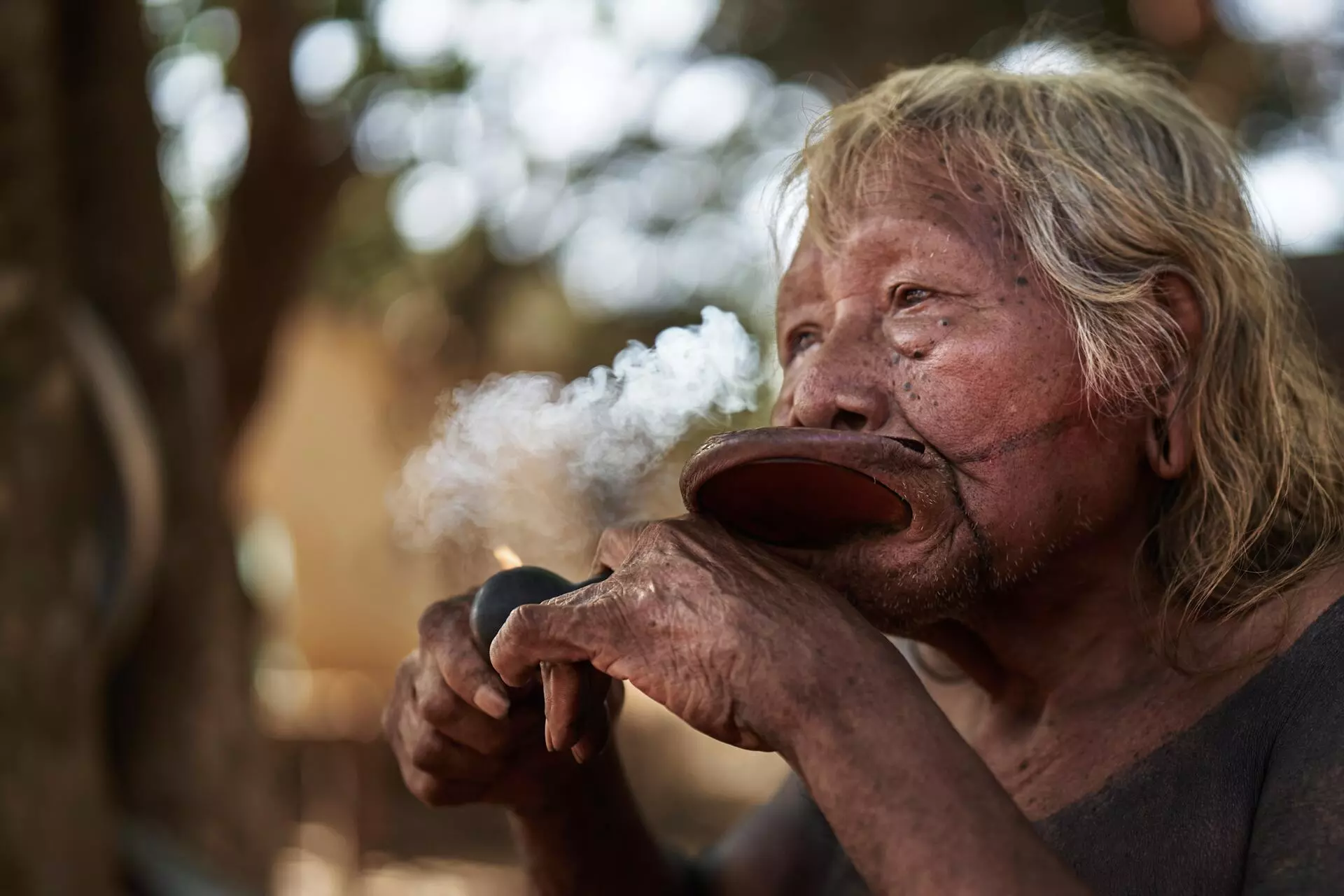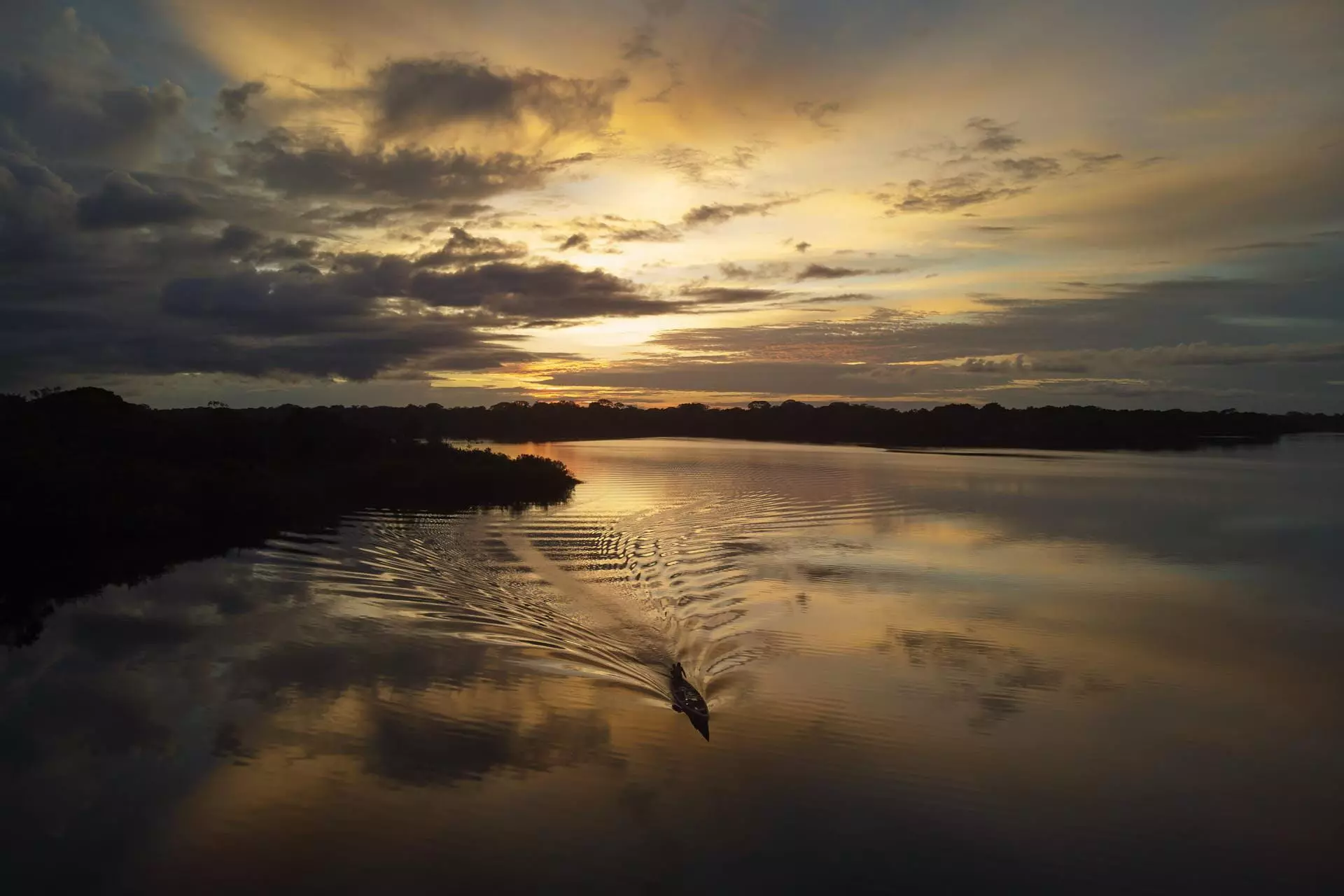Dear Sumahumans,
Thanks for entering the flow of our latest edition.
Too many people believe a forest is just trees. This is a grave mistake and not just because there are millions of other species below the canopy. A forest is also, fundamentally, water. The Amazon is a confluence of mighty rivers. They are the veins that make all other life possible. There is no forest without rivers. And rivers without forest are little more than canals.
For this reason, the sources of rivers should not just be protected, but cherished as we cherish life itself. Indigenous communities have been doing this for millennia – treating headwaters as sacred. Yet now they are threatened, their lands invaded and the waters polluted with toxic mining chemicals. All of which is to say that when we talk about water, we must talk about indigenous rights and the rights of nature.
So it was with great interest that SUMAÚMA watched the United Nations’ global water conference in New York last week, which was the biggest meeting on the subject in a generation. There was no doubt an ambitious conference was needed. A study released ahead of the conference predicted global demand for freshwater will outstrip supply by 40% by 2030, which will raise the risks of humanitarian disasters, international conflict and ecosystem collapse.
But there were questions: would the conference just look at water as a resource – another commodity to be bought and sold, used and abused – or would it be treated as it is treated by traditional Amazon communities – as a mother, a father, a grandparent, a part of the family on which people can depend on and care for? Would discussions be dominated by big corporations, who want to exploit the rivers for hydropower and industry, or by indigenous communities, who protect most of the headwaters?
Brazil should have taken the lead. This country has more surface freshwater than any other on Earth, most of it in the Amazon. But as several stories in this edition of Sumaúma make clear, this country may be blessed with water, but it has too been cursed by those who manage it. And for too long, it has ignored the indigenous voices of those who have best maintained the quality of the rivers.
The struggle for indigenous representation in politics is the subject of an insiders profile of the country’s first indigenous woman federal deputy Joenia Wapichana. It is written by one of her closest advisors, Mayra Wapichana who trained as a journalist at Roraima Federal University and later served as head of communications in Joenia’s congressional office. Joenia is now the first indigenous head of the indigenous affairs agency Funai, which will need to be strengthened if it is to address the threats that crime and global market forces pose to forest communities and the ecosystems they are part of. New research, covered in this issue by Ariene Susui, reveals half of illegal gold mines are in areas with isolated indigenous peoples, which bring mercury, cyanide and other dangerous contaminants into these areas. Ariene, who is also from the Wapichana people, is another of a new generation of indigenous journalists. She has a masters degree in communication from Roraima Federal University and since the age of 14, she has been an active participant in debates on the environment, education and the rights of women and young people.
Another of this generation is the Internet influencer Samela Sateré Mawé of Sateré Mawé people. Samela has now a column on SUMAÚMA TikTok channel. She studied biology at Amazonas State University and was a prominent campaigner for the National Articulation of Indigenous Women Warriors of Ancestry (better known by its Portuguese acronym Anmiga). We are delighted to welcome her into our community and hope you will check out her posts on Petrobras’ plans to drill for oil at the mouth of the Amazon river and Norte Energia’s moves to renew the operating cense of the Belo Monte hydroelectric dam on the Xingu river.
On this subject, Helena Palmquist reports for us on a key government seminar in Brasilia about the future of the biggest dam in the Amazon. Participants were shocked to discover for the first time how flimsy was the basis for Norte Energia’s claim that natural eco-systems and riverine lifestyles could be maintained with a maximum river flow of 8,000 cubic meters per second. This is a highly recommended read for anyone interested in the health of the Xingu. It may also be of interest to Rodrigo Agostinho, the new president of Brazil’s environmental protection agency Ibama, who said in an exclusive interview for this issue of Sumaúma that the “life of the river” will be paramount in deciding whether to extend the dam’s operating licence.
Putting all of this in a broader perspective is the welcome return of Gira, the news round-up of Amazon stories published in partner organisations and other media. Look here for news about climate impacts, threats to the oldest, biggest trees, Lula’s approval for an upgrade to the controversial BR319 highway through the Amazon and a devastating flood in Karipuna Indigenous Land, in Rondônia, which has been blamed on hydroelectric dams.
Which brings us back to the UN Water Conference, which finished with a flurry of agreements, promises to set up new scientific study groups and commitments to donate time or money by governments, companies and NGOs, all with the intention of easing the water crisis. SUMAÚMA shares that goal, but if the world is really serious about this, it is very clear from the perspective of the Amazon that the first steps should be see water as life rather than a resource, to give more to nature, to protect sources and to strengthen the rights of the indigenous communities who have the best proven track record of looking after them.
Wishing us all clear streams.
Jonathan Watts
SUMAÚMA creator and director of international relations
Spell check (Portuguese): Elvira Gago
Translation into Spanish: Meritxell Almarza
Portuguese translation: Thiago Leal
Photography editing: Marcelo Aguilar, Mariana Greif and Pablo Albarenga
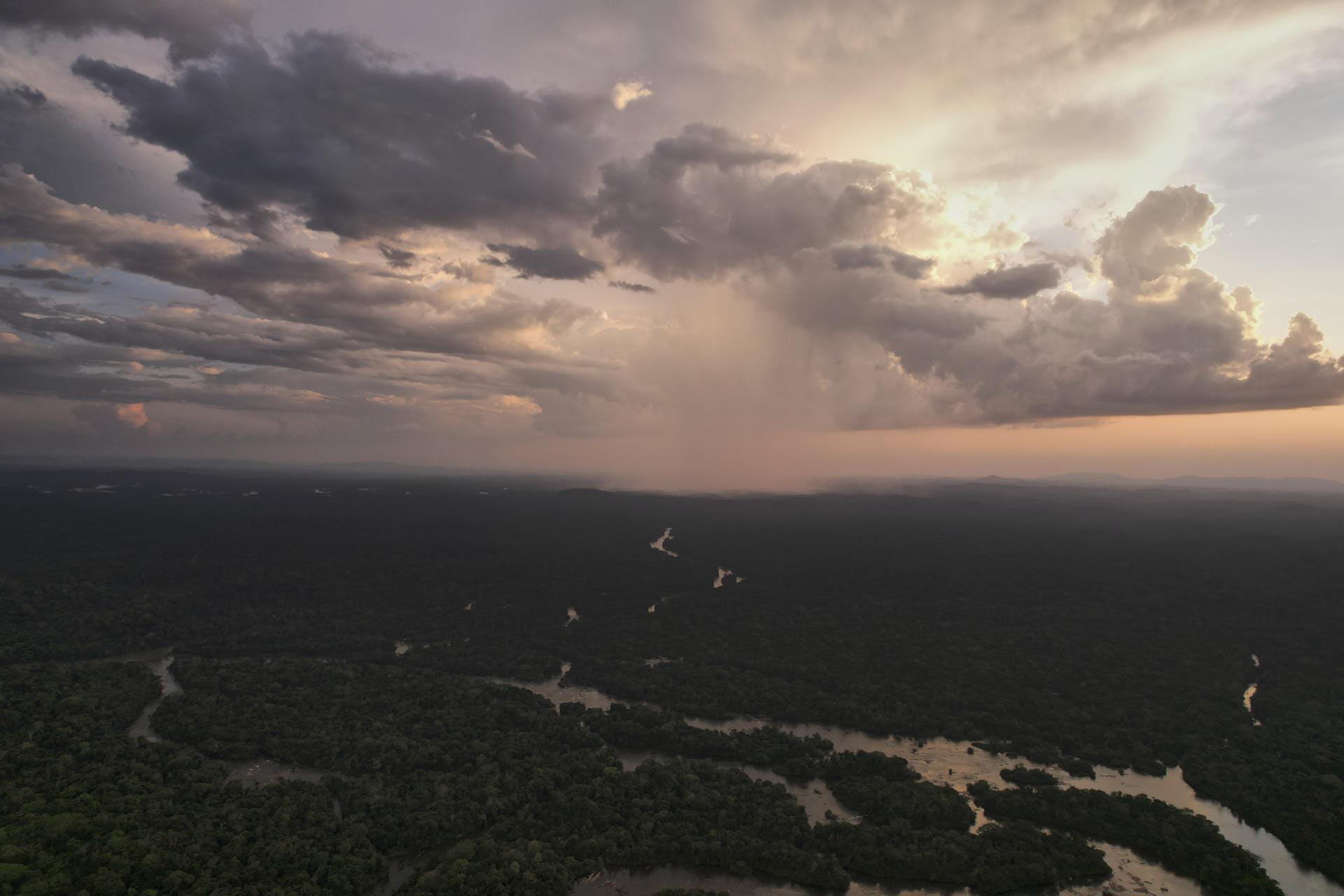
Storm forms over the Jari River and the Paru State Forest in Amazonia. Photo: Pablo Albarenga

